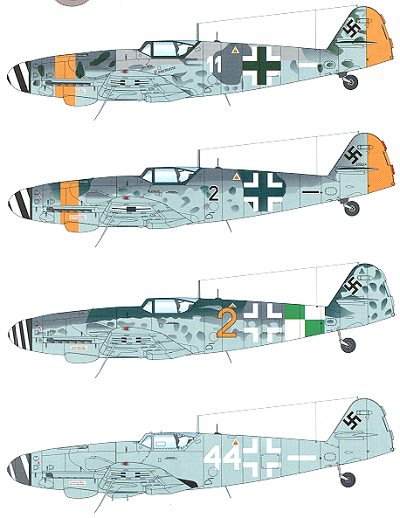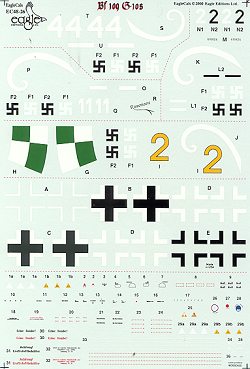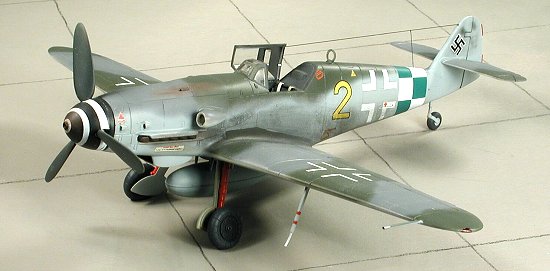
|
Sheet: |
EagleCals 4826: Bf-109G-10 |
| Units: | Various |
|
Price |
$ |
|
Reviewer: |

This sheet is dedicated to the Bf-109G-10. As some of you may know, it was pretty well standard in the Luftwaffe to rebuild damaged aircraft. Sometimes, they were put back into original configuration, but often they were modified to the most current version. That is the case of every Bf-109G-10 that was ever produced. None of them were brand new airframes and all converted from earlier versions, mostly the G-6 version, which was produced in more numbers than any other 109 variant. As a result, it was possible to see a wide variation in some of the components of the airframe. What is most noticeable in the profiles is that some had the original G-6 tail wheel while others had the extended version of later production planes. It was also possible to find some with the wider wheels and others with the regular G-6/14 version.
 There are four
aircraft on this sheet. The first one is white 11 from II./JG 52. It has a
replacement cowling from another aircraft. Overall, the colors are not
positively identified. The sheet claims 74/75 on the upper wings/tail planes
with the fuselage in a combination of 74/75/83 in various locations. It does
have a yellow rudder and yellow nose stripe.
There are four
aircraft on this sheet. The first one is white 11 from II./JG 52. It has a
replacement cowling from another aircraft. Overall, the colors are not
positively identified. The sheet claims 74/75 on the upper wings/tail planes
with the fuselage in a combination of 74/75/83 in various locations. It does
have a yellow rudder and yellow nose stripe.
Also from II./JG 52 is black 2. It is a bit more uniformly painted, being in RLM 74/75/76 with the yellow rudder and nose stripe.
From KG(J) 27 is this G-10 in RLM 74/75/76 with the units Reich
Defense band on the rear fuselage. I built a model of this aircraft using an
Aeromaster sheet and the Revell kit several years ago as you can see from the
image below. As you can also see, I used RLM 75/83 for the upper colors instead
of what was suggested by EagleCals. The Aeromaster sheet also used a slightly
different pattern for the rear fuselage band. This aircraft has the type 110
cowling which more smoothly incorporated the trailing edge of the port side into
the rest of the fuselage.

The final scheme is a plane of II./NJG 11. These night attack planes were in overall RLM 76. They also had a small sliding panel in the canopy and extended exhaust shields to keep from blinding the pilot. Many of these planes also had whistles attached to the shields so that friendly gunners could hear them and not fire on the plane.
For kits, many will choose the newer Hasegawa kit, but the Revell kit is also a good choice, especially for the earlier versions with the short tail wheel.
If you would like your product reviewed fairly and quickly by a site that has well over 175,000 visitors a month, please contact me or see other details in the Note to Contributors.